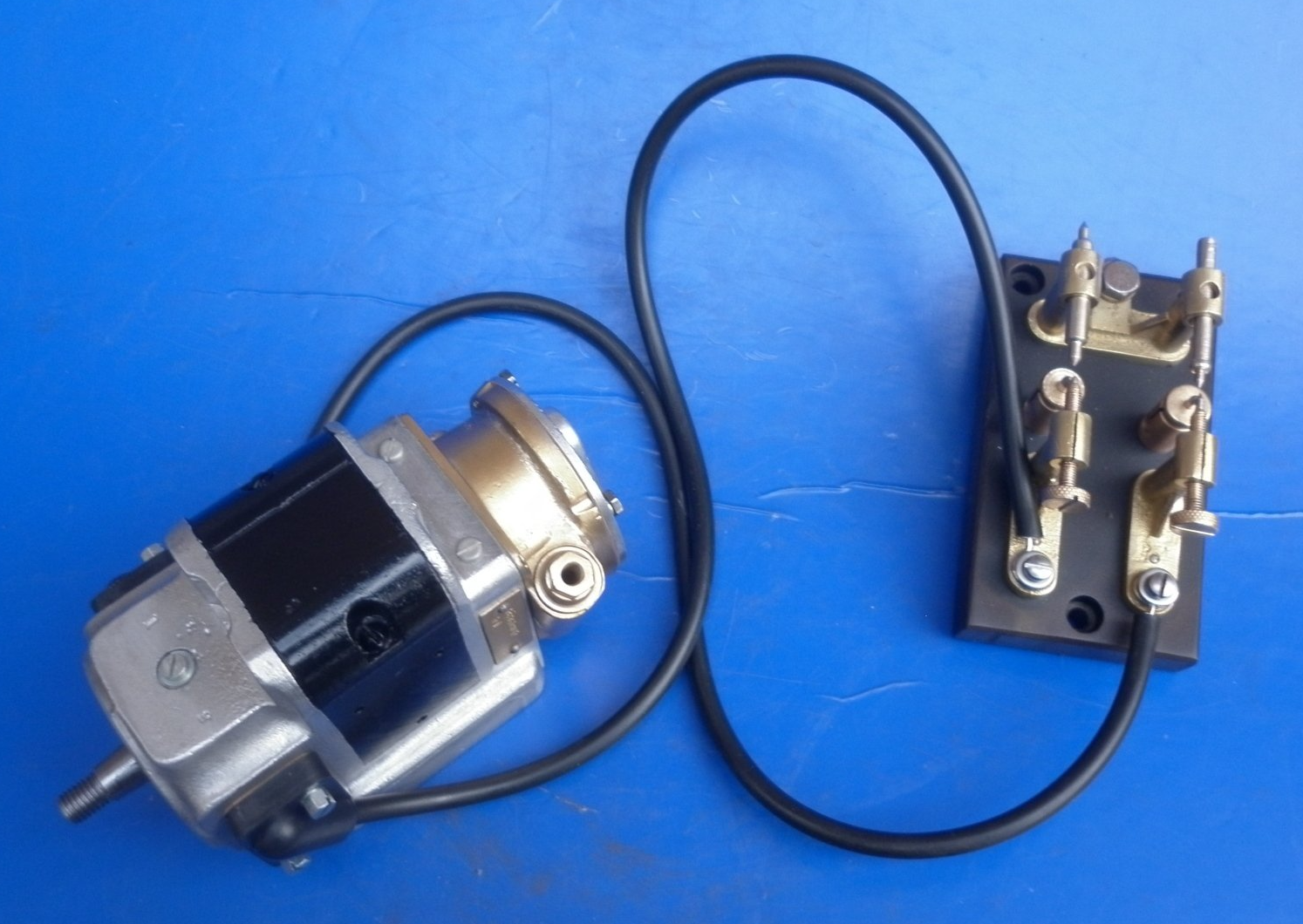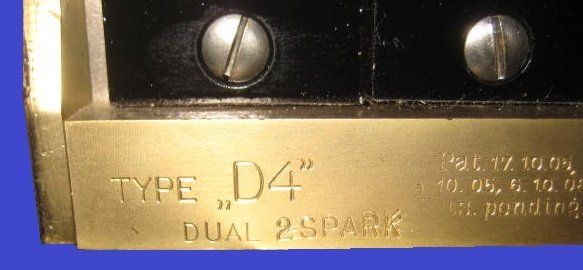Twin Spark Magnetos
At first glance, the twin spark magneto shown above looks very much like a standard twin cylinder magneto. They both have the same basic components that make up a magneto but they differ in three distinct areas - the cam ring, the way in which the secondary coil is wound and the construction of the slip ring.
1: The cam ring on a standard twin cylinder magneto gives two sparks per revolution of the armature because the plug in each cylinder is required to produce a spark at different times. The cam on the twin spark magneto only needs to give one spark per revolution of the armature because both spark plugs fire at the same time.
2: The secondary coil on a standard magneto usually has the start of the winding soldered to the finish end of the primary winding so is virtually at earth potential. On a twin spark magneto, the secondary coil is totally independent of the primary coil. Both the start and finish ends of the secondary winding are brought out to the slip ring.
3: The slip ring on a standard magneto has one HT spout for connecting the finish end of the secondary winding to a single brass segment in the slip ring. This brass segment connects, via a carbon brush, to each pick up in turn. The slip ring on a twin spark magneto has two HT spouts for connecting both the start and finish ends of the secondary winding to two separate brass segments on the slip ring. These two brass segments connect via carbon brushes to the two pickups at the same time.
For those interested in the detail, exactly what these differences are, are explained in detail on the Making a Twin Spark Magneto page in the Workshop section.
The twin spark magneto described above is designed for use with a single cylinder engine. The same twin spark principle can also be used with multi cylinder engines. Here, the two ends of the secondary coil are connected to individual brushes on the rotor arm each of which runs in it's own distributor cap. Each cap has an HT lead leading off to one plug in each of the cylinders. The system again uses a dashboard mounted changeover switch, this time with three positions labelled '0', '1' and '2'.
When the switch is set to the '0' or 'OFF' position:
1: the magneto primary winding is shorted to ground to disable the magneto
When the switch is set to '1' or 'single plug' position:
1: one end of the secondary coil is connected to ground thereby disabling one set of plugs
2: the magneto cut out is opened
When the switch is set to '2' or 'twin plug' operation:
1: both ends of the secondary coil are connected to individual rotor arms/distributors
2: the magneto cut out is opened
The switch is usually set to the 'single plug' position for starting using the hand crank. By disabling the second set of plugs, slower combustion takes place which has the effect of retarding the ignition timing slightly. This will help to reduce the likelihood of the engine kicking back. The single set of plugs used are usually the ones located nearest to the intake valves as this would be the area most likely to ignite the fuel mixture without misfiring.
Yet another variation is the 2 Spark Dual Magneto. This combines the two spark magneto system described above with the option to use a battery/coil system for starting as in the dual magneto systems previously described on the Dual Magnetos - Single Plugs page.
This arrangement uses the same 'M', '0', 'B' change over switch as with other dual magnetos but also includes a second switch labelled '2', '1', '2'. When the changeover switch is set to the 'M', magneto position, the second switch allows the driver to select '1' (single spark) or '2' (twin spark) operation.


